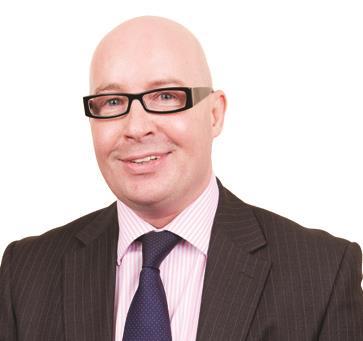Adrian McGuire, head of commercial broker property - product underwriting, Zurich Insurance, gives his view of the problem of underinsurance and what brokers can do to tackle it

The Building Cost Information Service (BCIS) report, though conducted in 2012, revealed that 80% of commercial properties were underinsured, and this could well reflect the state of commercial underinsurance today.
Sums insured consistently lag behind valuations by at least 20%. The reasons for this include businesses not including everything they should in the sums insured. They also tend to rely on market value rather than reinstatement/replacement cost for material damage affecting buildings, machinery and plant.
Insurers handling claims take no pleasure in applying averages to underinsured companies as it is a distraction from getting on with the vital job of business recovery. But with the right knowledge and awareness, brokers can help customers in preventing the risk of underinsurance.
Material damage
Building costs and demand for materials and labour are increasing post-recession and there are regional variations. The South East is seeing higher costs. In one case, an insured football club hadn’t appreciated the rise in building costs in reconstructing its facilities to a basic modern standard. The resulting underinsurance meant a claims settlement of 50% less than the final costs incurred.
Regulations are also putting pressure on costs. There are stricter approaches by local authorities and the Environment Agency to cleaning up after an event, as well as more demanding building regulations – particularly Part L, the energy efficiency requirements for insulation and thermal dynamics.
In a recent total loss claim for a sports centre, the indemnity period proved inadequate when the planning process lasted an additional three months in order to resolve an environmental reinstatement negotiation.
While the BCIS is a valuable and reliable guide to building types, it cannot take into account every feature. So it is vital that brokers and customers consider the features and circumstances of properties. Equally, listed buildings or those in conservation areas require further cost consideration to avoid the risk of underinsurance. Companies must seek expert advice and use regular valuations of buildings and machinery by chartered surveyors, who specialise in reinstatement, rather than market value when assessing sums insured.
The potential underinsurance issues affecting business interruption (BI) cover are indemnity periods and sums insured.
Many businesses underinsure by choosing short indemnity periods. This can catch out businesses that underestimate the time for replacing specialist machinery and materials, cleaning up the site or gaining planning permission to rebuild. And rebuilding isn’t the end of the story; business recovery must also be factored in.
In terms of sums insured, businesses should not only consider Increased Cost of Working (ICOW) cover, but also loss of gross profit and/or revenue insurance. ICOW cover may not be the best option, as increased operating costs may not fully indemnify the customer. And the insurance definition of gross profit differs from accountancy’s, so getting the right broker advice is essential.
Brokers have a pivotal role to play in ensuring customers have the right level of cover and sums insured. But brokers dealing with a multitude of covers may find that customers aren’t interested in going into the detail, which is essential to avoiding the risk of underinsurance.
Brokers should take the opportunity to help customers understand the value of fixing a BI indemnity period and reassure them that Zurich builds in an uplift to reflect inflation within the period.
Long-term view
Though hard to predict, it’s useful for brokers to establish the likely growth of a customer’s business, as this will affect the sums to be insured.To forecast what will happen over the indemnity period, brokers can also schedule regular reviews
Brokers should also consider some customers’ over-optimism about their ability to react following a loss and to underestimate the time and cost to recover. Brokers might be uncomfortable dwelling on the doom and gloom of loss and underinsurance, but it’s in brokers’ and customers’ best interests.
Zurich uses scenario tests to assess business continuity plans and understand how a company would react to a major incident. This involves identifying whether there is a common understanding of what to do, how the company would communicate with stakeholders, how robust its business continuity plan is and what improvements it needs.
With their knowledge of customer businesses, brokers are in a strong position to help mitigate the effects of underinsurance. Having access to other professionals, such as valuers and loss adjusters, can be part of the broker’s armoury, giving customers confidence that they have the right level of cover.
For the latest insights and practical expertise, visit www.insider.zurich.co.uk and follow us on Twitter @ZurichInsider

Hosted by comedian and actor Tom Allen, 34 Gold, 23 Silver and 22 Bronze awards were handed out across an amazing 34 categories recognising brilliance and innovation right across the breadth of UK general insurance.














































No comments yet